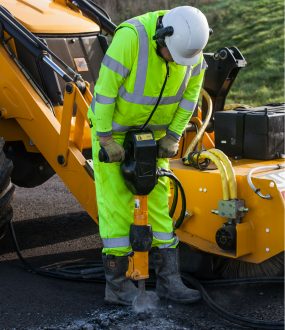Construction Tools and Hearing Damage
If you work in the construction industry, you’ll be aware of how noisy it is. From drills and saws to lorries and blasters, there really is no escaping it.
However, did you know just how dangerous this noise can be? Each year, over 1 million workers are exposed to noise which has the capacity to damage hearing. What’s more, the construction industry has the second highest rate of people developing occupational deafness.
To raise awareness for the problem of occupational deafness, Health & Safety Training will be taking an in-depth look at the problems relating to construction tools and hearing damage, and what we can do about it.
When does construction noise become harmful?
This question isn’t the easiest to answer given that, in many scenarios, there’s more than one machine contributing to noise levels. However, as a rule, if you’re exposed to anything above 85 dB for an extended period of time, your hearing can be damaged permanently.
How long that period of time is will depend on what machinery your using, so let’s take a scabbler as an example. A scabbler creates around 100 dBs of noise, about equal to a helicopter at 100 feet. If you were to use one for fifteen minutes without ear protection – it would permanently damage your hearing.
Further up the scale is a pneumatic breaker, which creates 130 dBs of noise. Using one without protection for over a minute would permanently damage your hearing.
Here are some quick-fire facts on hearing loss in construction:
- Removing your protective earmuffs for just five minutes cuts your protection in half. The dangerous thing here is that when we become familiar with noise on site, we think it’s safe to take hearing protection off. This simply isn’t the case.
- Failure to equip employees with the correct hearing protection has led to a 25% rise in noise breaches. This has a lot to do with the fact that younger employees simply don’t know how much noise they’re making.
- Occupational deafness costs the UK’s economy up to £7 billion per year. And £500 million of that cost is incurred by the NHS.
What can companies do to protect their workers from hearing loss in construction?
50% of all hearing problems can be prevented by putting measures in place, according to the World Health Organisation. And under The Control of Noise at Work Regulations 2005, employers are duty bound to and control noise levels as much as possible on site.
Here are the key ways employers can achieve reduced hearing loss in construction:
- Supply high-quality hearing protection.
- Use quieter tools on site, where possible. Another option is to try and complete some tasks manually.
- Use pads to minimise vibrations, or silent blades and nozzles to help reduce the noise.
- Limit the amount of time a particular worker is exposed to a noisy task. This sort of work should be done in shifts.
Once you’ve lost your hearing – there’s no getting it back. So in this case, an ounce of prevention is worth far more than a pound of cure.
If you’re unsure about when to use hearing-related PPE, or are concerned about hearing damage on your construction site, Health & Safety Training can help. We offer offer a variety of specialist safety courses which provide your employees with the knowledge of how to stay safe on site. For more information about the different courses we offer, why not give us a call? We would be happy to advise you.
Manual Handling Techniques Manual Handling Quiz






